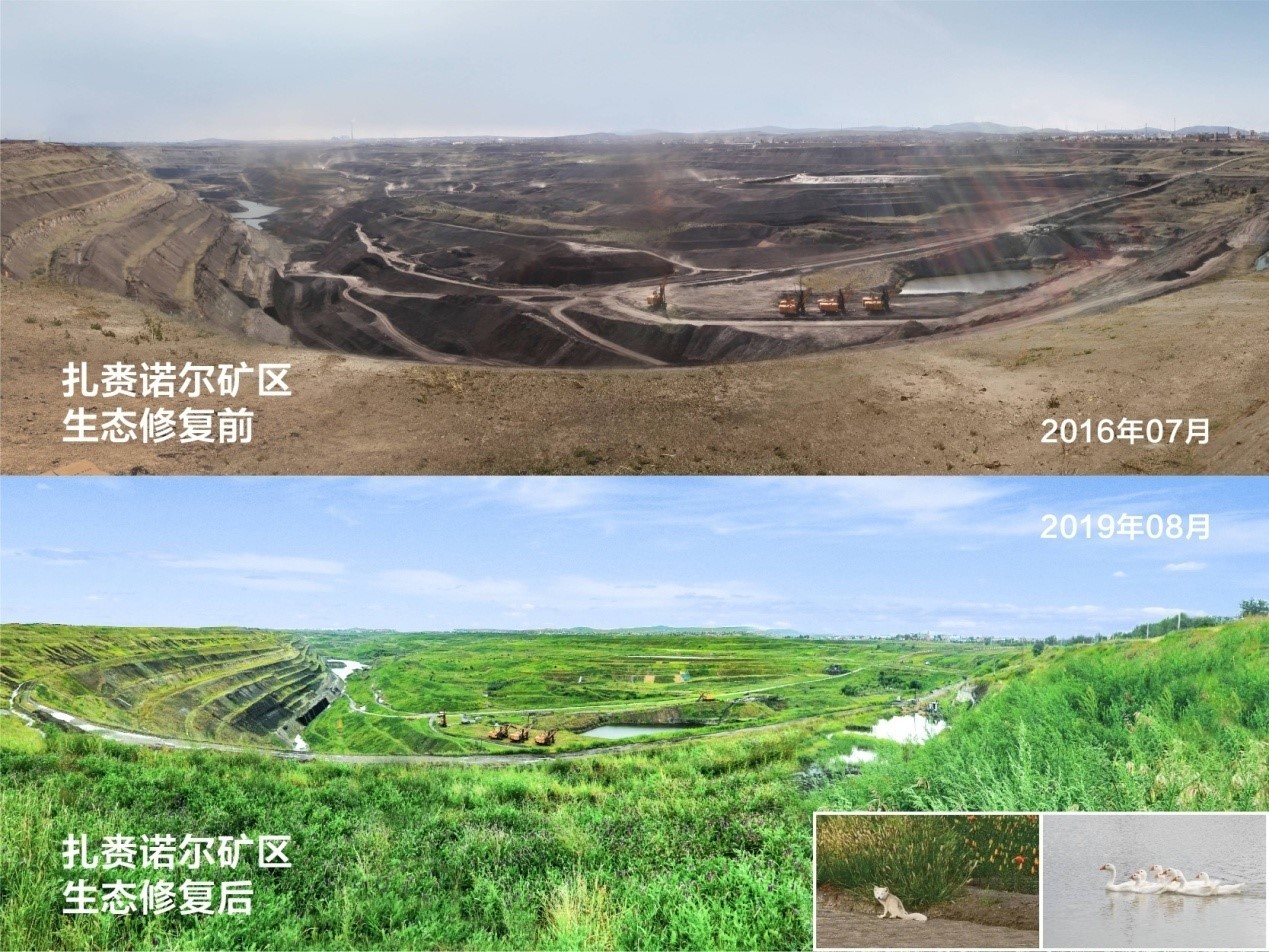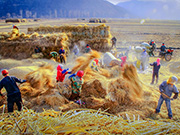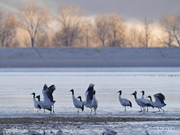

 |
| Photo shows an open-pit mine in Dalai Nur District, north China''s Inner Mongolia, before and after ecological restoration. (Photo/Courtesy of M-Grass Ecology & Environment (Group) Co., Ltd.) |
Due to excessive herding and exploitation of mineral resources, the ecological environment of north China's Inner Mongolia Autonomous Region was, at one point severely damaged and faced a serious soil erosion problem.
Since the end of 2012, Inner Mongolia has stuck to the path of green development, effectively strengthened the protection and restoration of forest and grassland and promoted desertification prevention and control measures, laying an environmental foundation for economic and social development.
In 2019, the forest coverage rate in Inner Mongolia increased to 22.1 percent and the comprehensive vegetation coverage of grassland reached 44 percent.
The region has completed forestry ecological construction on more than 12 million mu (8,000 square kilometers) of land annually, ranking first in China, and dealt with the problem of soil erosion on an average of over 9 million mu of land a year.
It has also encouraged citizens to voluntarily plant trees and mobilized enterprises to participate in preventing and controlling desertification.
 |

 Award-winning photos show poverty reduction achievements in NE China's Jilin province
Award-winning photos show poverty reduction achievements in NE China's Jilin province People dance to greet advent of New Year in Ameiqituo Town, Guizhou
People dance to greet advent of New Year in Ameiqituo Town, Guizhou Fire brigade in Shanghai holds group wedding
Fire brigade in Shanghai holds group wedding Tourists enjoy ice sculptures in Datan Town, north China
Tourists enjoy ice sculptures in Datan Town, north China Sunset scenery of Dayan Pagoda in Xi'an
Sunset scenery of Dayan Pagoda in Xi'an Tourists have fun at scenic spot in Nanlong Town, NW China
Tourists have fun at scenic spot in Nanlong Town, NW China Harbin attracts tourists by making best use of ice in winter
Harbin attracts tourists by making best use of ice in winter In pics: FIS Alpine Ski Women's World Cup Slalom
In pics: FIS Alpine Ski Women's World Cup Slalom Black-necked cranes rest at reservoir in Lhunzhub County, Lhasa
Black-necked cranes rest at reservoir in Lhunzhub County, Lhasa China's FAST telescope will be available to foreign scientists in April
China's FAST telescope will be available to foreign scientists in April